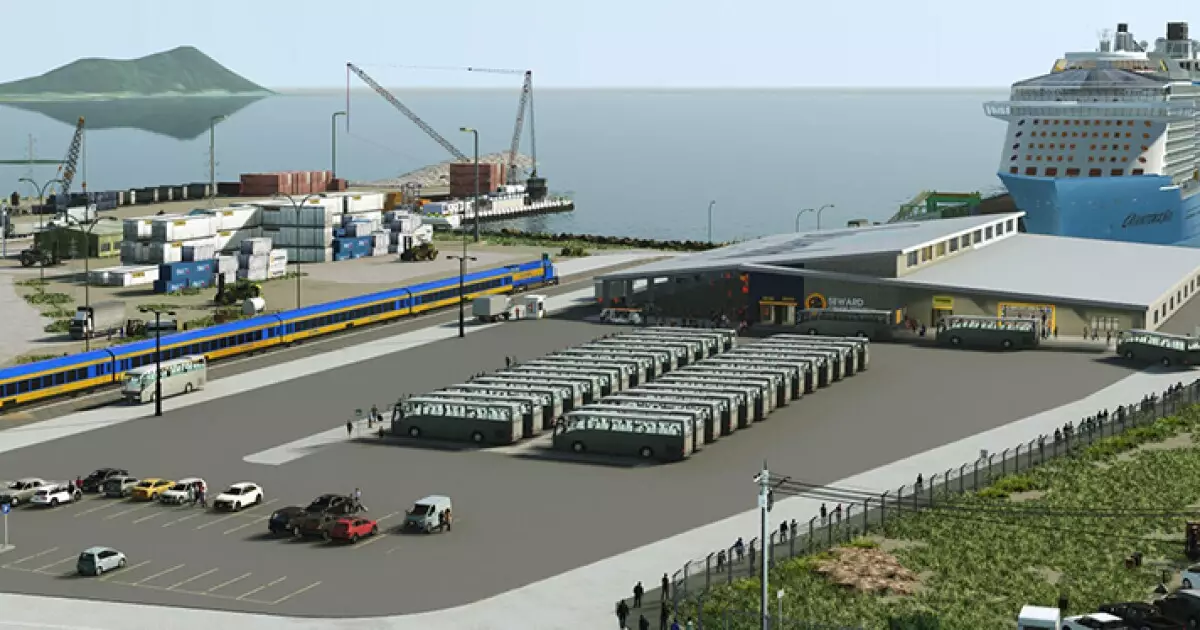In an age where towns and cities seek effective means to revitalize their economies, the recent legislation governing the Alaska Railroad Corp.’s ability to issue $135 million in revenue bonds presents a pivotal moment for Seward, Alaska. Signed by Governor Mike Dunleavy, House Bill 65 signals much more than a financial maneuver; it represents a strategic shift in the state’s commitment to both tourism and community enhancement without incurring a direct financial burden on the taxpayers. This innovative approach reveals the potential for growth through public-private partnerships—an idea that is often overshadowed by the conventional reliance on state funds for development projects.
Understanding the Financial Framework
The mechanism behind these revenue bonds is noteworthy. Unlike traditional public financing, the Alaska Railroad will not utilize the state’s general credit to back these bonds. Instead, the funds are secured through a 30-year agreement with Royal Caribbean Group, which underscores how large corporations can play a vital role in local economic growth. By guaranteeing a minimum of 140,000 annual cruise guests, Royal Caribbean ensures that revenue generated from port improvement fees will adequately cover the bond repayment. This not only alleviates pressure from state finances but also creates a streamlined financial model that local governments can replicate, bringing hope for independence from state revenue dependency.
However, one must question if overly reliant partnerships with large corporations may risk local interests. While Royal Caribbean’s involvement guarantees a steady stream of tourists, the local economy could become overly exposed to the cyclical nature of tourism, which is susceptible to fluctuations in travel trends and global uncertainties. Therefore, while this deal seems promising, Seward must rarely let its economic revitalization rely too heavily on the whims of a singular industry—diversification should remain a priority.
Multi-Use Space: Beyond Just Tourism
City Manager Kat Sorenson’s letter to lawmakers highlights a crucial facet of this project: a commitment to community-centric development. The proposed terminal facility is not meant to serve exclusively cruise passengers; it aims to be a year-round multi-use venue for local events. Seward stands to benefit from enhanced community spirit through events like the Seward Music and Arts Festival and community celebrations such as the watch party for local Olympian Lydia Jacoby.
This vision underscores an essential truth: local development should adapt to serve the community’s need for gathering spaces and cultural expression. However, what remains unsaid is the challenge of balancing the influx of tourists with the lifestyle and safety of Seward’s residents. As more visitors flood into the town, will it lead to the commodification of local culture, transforming Seward into merely a backdrop for corporate enterprises? Addressing these concerns early on is essential to maintain a vibrant local atmosphere amid increasing tourist activity.
Infrastructure: A Long-Term Investment
Replacing Seward’s outdated mid-1960s terminal with a new floating dock designed for modern quantum class cruise ships is crucial for the town’s continued status as a viable port destination. Alaska Railroad CEO Bill O’Leary noted the economic promise this facility holds for communities across various regions of Alaska. He correctly emphasizes the need for infrastructure that meets contemporary standards and demands. However, one might argue that while the new dock serves as the foundation for tourism, it should also foster connections within the wider Alaskan community, enhancing intrastate travel via the Alaska Marine Highway System.
It is easy to romanticize the benefits of new infrastructure, yet it is just as easy to overlook the potential shortcomings. Seward must remain vigilant against inadequacies in transportation and services that could emerge as its tourism scale increases. Long-term planning for adequate resource allocation—be it for public safety or environmental protection—will be vital to ensure that Seward thrives without compromising its unique character.
Ultimately, the journey towards revitalizing Seward via this $135 million initiative encapsulates a promise of growth built on strategic partnerships and community benefits. However, as vigilant stewards of this opportunity, stakeholders must prioritize maintaining a balance between booming tourism and community integrity, ensuring that Seward does not lose what makes it truly special.

